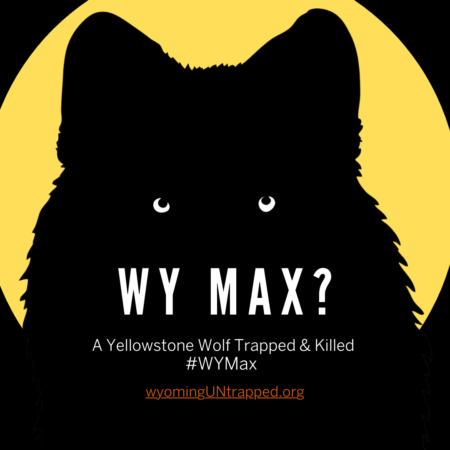
MAX, Yellowstone Wolf - 1155
Gray Wolf: Canis lupus
Description: Collared adult male, black in color.
Range: Yellowstone National Park
Diet: a predator and scavenger, the primary large prey for wolves in Yellowstone is elk. Wolves will also hunt moose, deer, and bison.
Behaviors: “He was an adventurous wolf, willing to take on a lot of risks as he sought out new places to explore” Rick McIntyre.
“If you had seen 1155 with those pups and did not know the backstory you would assume that he was the father or the uncle of those pups.” Rick McIntyre
“Max and 1091 were always together and I remember watching them play, right in front of elk. Their joy of being alive made me smile.” Deby Dixon.
Life History: Born in 2014 to Mollie’s pack in Pelican Valley, north of Lake Yellowstone. He, along with two other Mollie’s males (1014 and 1015) joined the Wapiti pack located in Hayden Valley and drove off the alpha male (755). Max raised the pups of 755. He bonded with 1091, a female of the Wapiti Lake pack, and became the beta male as a result. He joined the 8 Mile pack in 2018 after his mate was killed while hunting. The 8 Mile pack occupies the northern Montana border of the park. Max was trapped and killed on February 15, 2021, just 10 miles outside of Yellowstone National Park by Montana Governor Greg Gianforte.
Wolf management predatory area in over 85% of the state
Since delisting wolves in 2012, Wyoming Game and Fish manages wolves to the minimums required by regulations outside Yellowstone and the Wind River Reservation.
The basic dynamic is that Wyoming made certain commitments to obtain federal wolf delisting by FWS and if Wyoming violates those commitments the remedy is for FWS to re-list the wolves. WGFD took over full management of wolves on May 1, 2020. See the full ruling.
- Statewide – 15 breeding pairs and 150 wolves, including YNP and Wind River Reservation 5/50.
- Trophy Game Statewide (TGSW) – 10 breeding pairs and more than 100 wolves – Committed to by WGFD.
- Currently with a buffer – 10+ breeding pairs and 160+ wolves.
- Predatory area wolves are not counted and are not included in wolf management numbers.
WY Max?
Max was a wolf who grew up in Yellowstone National Park. He was protected by federal law until he stepped outside the park boundary and was caught in a trap. Max laid in the trap traumatized and suffering until February 15, 2021, when he was shot dead.
WY?
Because killing a black male wolf makes for a good story and a neat souvenir.
Because Max stepped outside his protected home in Yellowstone.
Because killing a trapped defenseless animal is a thrilling experience.
Most of all… Because it’s LEGAL!
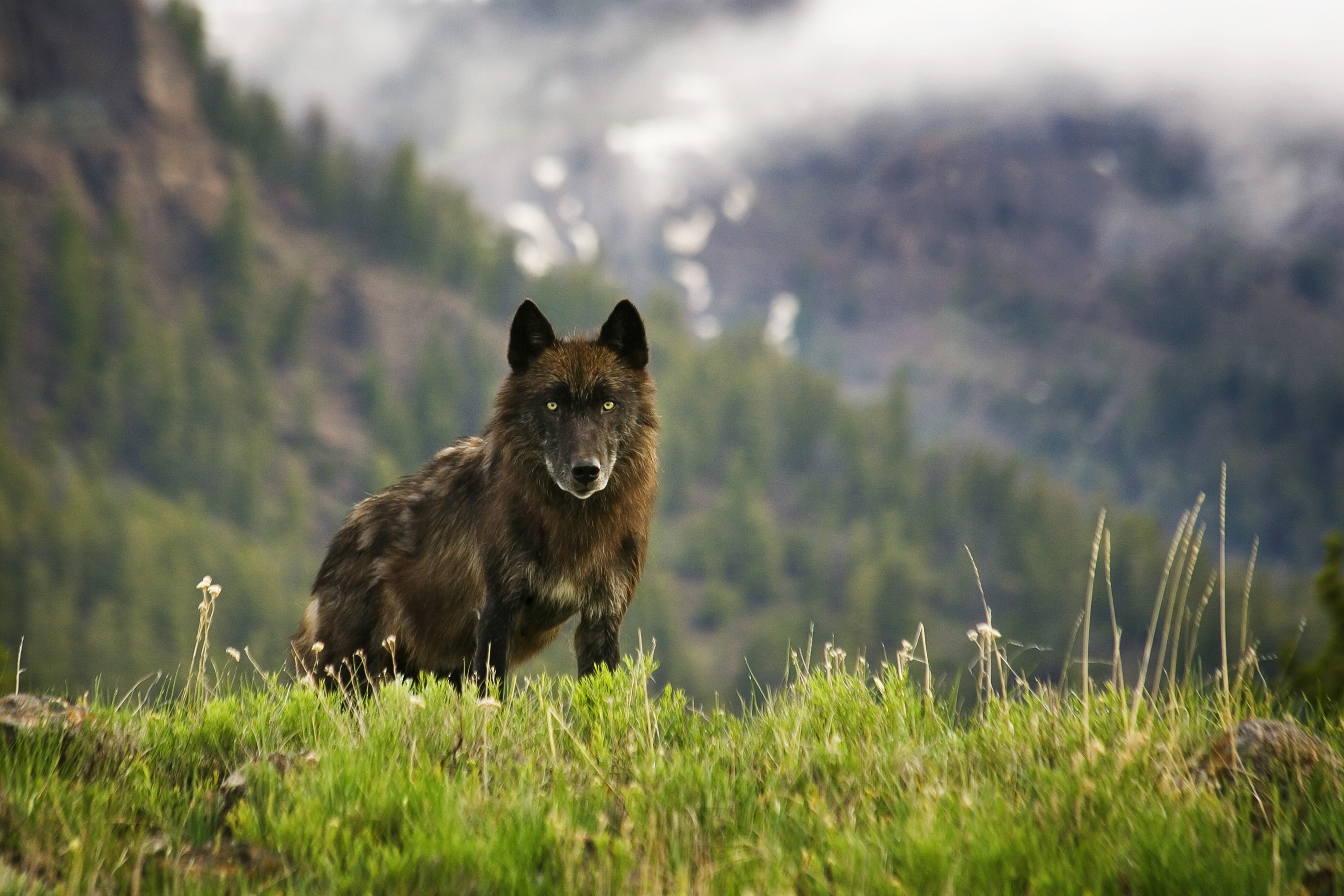
Max's Story
Millions of people venture deep into the Greater Yellowstone Ecosystem every year seeking an encounter with the world-renowned Yellowstone wolves. Many brave the bone-chilling temperatures and unforgiving winter weather just for a brief glimpse of these captivating creatures. All the while taking home a memory that will last them a lifetime. Wolves are protected within the National Park, however, that protection ceases outside those boundaries where the hunting, trapping, and killing of wolves is legal in the surrounding states. Wildlife don’t recognize these human-designated borders and cross in and out of the park as their territories dictate, leaving them vulnerable to persecution.
This was the case for Max,1155. Max was a collared Yellowstone wolf who ventured onto a private ranch just 10 miles outside of Yellowstone National Park, where he was trapped and killed by Montana’s Governor Greg Gianforte. Gov. Gianforte violated Montana Fish, Wildlife, and Parks trapping regulations by not taking the required Wolf Trapper Education and Certification course before trapping and killing Max; he was issued a warning. Never again will Max cross the path of another Yellowstone visitor and provide them with an unforgettable experience. A Resident Gray Wolf License in Wyoming is $21. In 85% of the state, wolves are designated as predators that can be killed on sight in any manner without a license or fee. For $21 or for free an animal that millions of people come from all over the world to see, can be legally hunted, trapped, killed, and taken from our public lands forever.
“I got interested in harvesting a wolf when that became legal here in Montana”
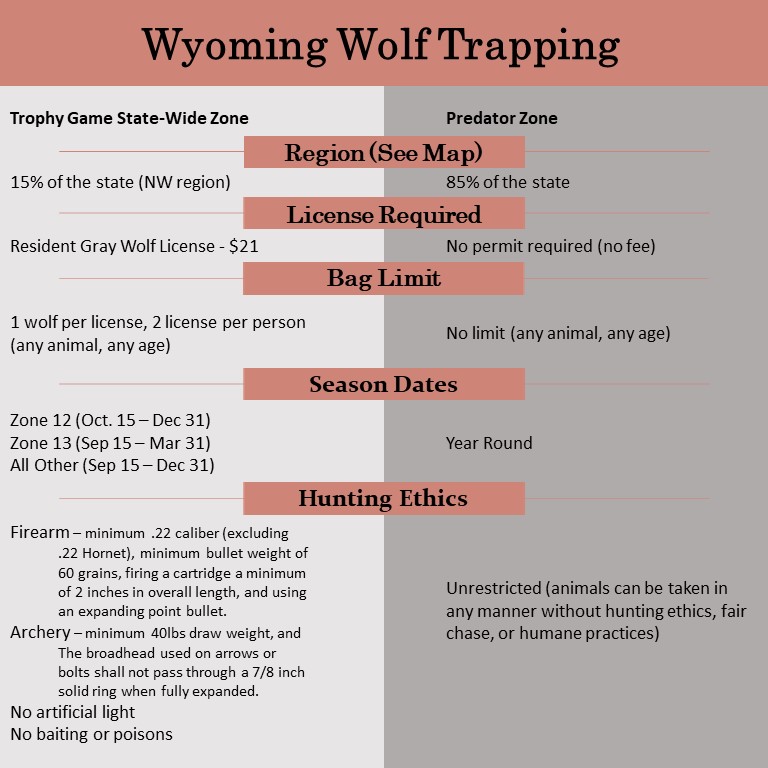
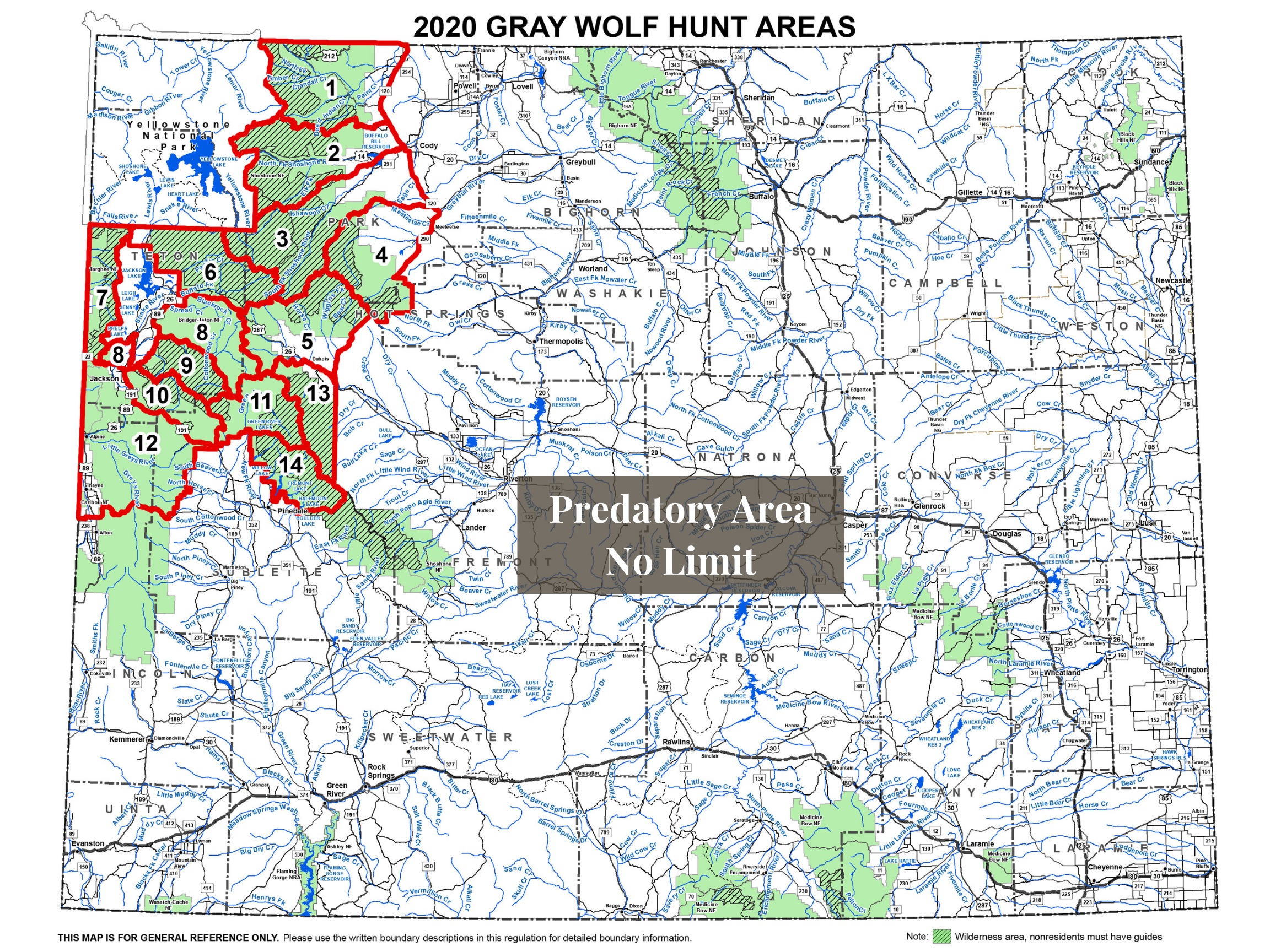
History of wolf management in Wyoming – a short summary
The gray wolf is one of North America’s most iconic native predators. The wolf’s incredible comeback in the Northern Rockies is one of our country’s greatest wildlife success stories.
Explore the history of the Northern Rockies gray wolves, beginning in the 1930s when their numbers were decimated after years of persecution, through their successful reintroduction in the 1990s, to the current day’s first legal wolf hunts in the Northern Rockies in nearly a century. The abbreviated summary follows or read here for the full timeline.
- 1933 Wolf Population Decimated – Bounty hunters finish killing most wolves in the continental United States. Tiny remnant populations cling to existence in several spots along the Canadian border in Michigan, Montana, and Idaho. Reports of ghost wolf sightings trickle in from parts of Wyoming, Washington, and Idaho.
- 1973 Endangered Species Act Becomes Law – The Endangered Species Act (ESA) is signed into law by President Nixon. It prohibits the “taking,” without explicit permission, of species deemed to be in danger of going extinct. “Taking,” in this instance, means killing, harassing, or damaging habitat necessary for the survival and recovery of the species.
- 1974 Wolves Listed as “endangered” Under Endangered Species Act – As part of the first list of species to receive federal protections, gray wolves are listed as “endangered” under the ESA. The designation applies to all remaining wolf populations in the lower-48 states.
- 1995 Reintroduction Begins – The U.S. Fish & Wildlife Service (FWS) begins reintroducing gray wolves to central Idaho and Yellowstone. Wolves are brought in from Canada.
- 2004 State Management Plans: Idaho, Montana, Wyoming – FWS accepts Montana’s and Idaho’s proposed management plans for wolves but rejects Wyoming’s. The State of Wyoming, livestock and hunting interests supported plans to manage wolves as “predators,” which would permit indiscriminate killing in nearly 90% of Wyoming.
- 2004 Wyoming Files Suit The State of Wyoming and 28 Wyoming-based livestock and hunting groups file suit, challenging FWS’s rejection of the Wyoming management plan.
- March 2005 Wyoming Loses in District Court; Appeals – Federal District Court Judge Alan B. Johnson tosses out the lawsuit filed by the State of Wyoming and livestock and hunting interests challenging FWS’s rejection of Wyoming’s management plan. The case is ultimately appealed to the 10th Circuit.
- April 2009 Northern Rockies Wolves Delisted Again – Wolves in the Northern Rockies are again removed from the endangered species list. The delisting rule goes into effect on May 4, 2009. With the exception of Wyoming, where wolves remain federally protected, states will take over management of their wolf populations.
- August 31, 2012 Wolves Delisted in Wyoming – FWS announces it is eliminating federal protections for Wyoming’s wolves handing wolf management over to Wyoming, which will open almost all of the state to immediate, unconditional wolf killing. Wyoming’s wolf population is estimated to be only 328 wolves, far fewer than either Idaho or Montana.
- September 23, 2014 Protections Reinstated for Wyoming Wolves – A ruling from Federal District Court Judge Amy Jackson invalidated the statewide delisting of wolves in Wyoming, reinstating protections for the species. Earthjustice represented Defenders of Wildlife, Natural Resources Defense Council, the Sierra Club, and the Center for Biological Diversity in challenging the FWS’s decision to strip Endangered Species Act protections from gray wolves in Wyoming. 219 wolves were killed under Wyoming’s management since the 2012 delisting.
- April 25, 2017 Wolves Delisted in Wyoming – The U.S. Fish and Wildlife Service hands wolf management authority over tot the State of Wyoming, despite state policies that promote unlimited wolf-killing across more than 80% of Wyoming and provide inadequate protections for wolves in the remainder.
- A look ahead – May 1, 2022 – Wyoming Game and Fish Department’s five-year wolf management obligations will end, and the final management will be in their hands. Wyoming made certain commitments to obtain federal wolf delisting by FWS and if Wyoming violates those commitments the remedy is for FWS to re-list the wolves.
Learn more about Wyoming Untrapped.
Additional information can be found here…
- Sign on to our Newsletter
- Donate
- Contact Us
- Wolf Photos courtesy of: Sue Pounian Ernisse, Mike Cavorac, Loi Nguyen, Sonia Reid
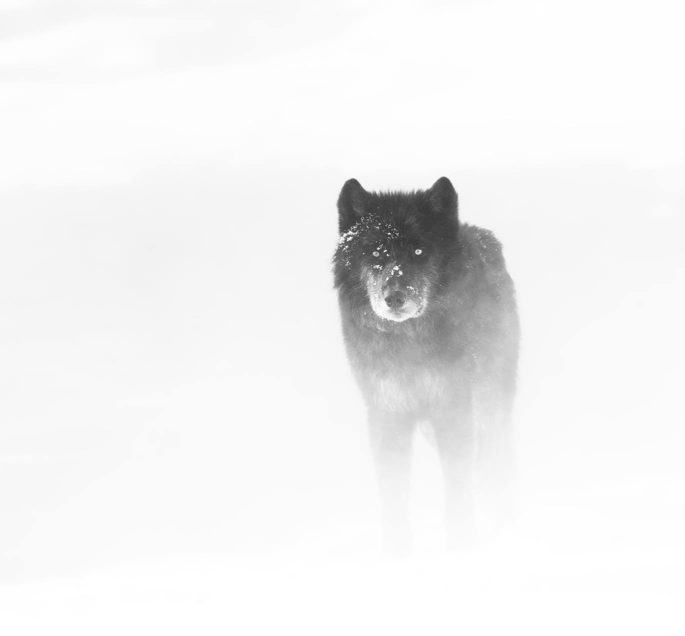
Comment. Show Up. Stay Informed.
Talking Points
It is usually most effective to be persuasive, but not rude, sarcastic or angry. Speak from the heart of one who is more inclined to support our Game & Fish Department if and when doing what is best and right for all residents and visitors in Wyoming, now and into the future. Original words directly from your own heart and mind are more likely to be given consideration than words and phrases that sound scripted.
Focus the energy of your words on wolf hunting, trapping, and snaring reform, and the shifting tide to twenty-first-century wildlife management and public tolerance.
How should you say it?
Wrap your own words around a spectrum of reasons to send wolf trophy trapping and hunting practices to the “gut pile”. Reasons that might speak to:
- Max, this beautiful wolf in search of a mate “is a story of unfathomable pain and fear, heartbreak and the innocence of wild beings. It is also a reminder that humans, not wildlife, need serious management.” Stephen Capra
- emerging trends in wolf wildlife management;
WU believes that the value of wolves to the health of our public landscapes outweighs the recreational opportunity to trap and kill with cruel and inhumane steel devices year-round without any scientific foundation. We request that the Wyoming Game and Fish Department and the Wyoming Game and Fish Commission permanently end hunting of wolves in the Trophy Zone. - the pure cruelty of trapping causing injuries, exposure, dehydration and mental stress, and often immense suffering;
Should all trap-check time requirements be reduced to 24-hour trap checks, or should traps be eliminated from our landscapes? Jeremy Bentham famously asked, “The question is not, ‘Can they reason?’ Nor, ‘Can they talk?’ But, “can they suffer?'” - the absence of sportsmanship, fair chase, and compassion in trapping;
Every animal in Wyoming, including endangered species, is a possible victim of traps and snares. Is it fair chase not to know your target? Or to sit at home on a couch and wait for a catch? - wolves are not trophies;
The sport hunting and trapping of wolves by the general public serves no purpose other than as an expression of “blood lust” and a catalyst for “bragging rights.” There is no derived food value, only ego gratification. Many members of WU were brought up in hunting families and were taught that you only kill what you will eat. WU still subscribes to that value. A trophy hunt of wolves feeds nothing more than the personal ego, and as it all too often occurs within the Predator Zone, is a disgrace to the ethical hunting community. Again, Wyoming’s wolves should have big game status with a year-round closed hunting season. - wolves play a role as apex predators;
Wyoming Untrapped opposes sport hunting of wolves for several reasons, including the significant role wolves play as apex predators within the Greater Yellowstone Ecosystem and how the indiscriminate killing of wolves can have a significant impact on the natural functioning of ecosystems. - they can control their own numbers;
The indiscriminate hunting and trapping of wolves can have significant impacts that will reverberate throughout the ecological systems. Wolves are apex species and exist not as individuals but as social units-as packs. Leave them alone and they will flat out control their own numbers (Ordiz, A. et al. 2013.). Witness the Yellowstone wolf population: after 20-plus years, this sub-population has stabilized around 100 individuals–without human intervention, control or hunting and trapping. And the Northern elk herd, a primary food source for a large portion of Yellowstone’s wolves, is on a steady increase. - Principles of the North American Model of Wildlife Conservation (NAMWC);
Wyoming Untrapped also opposes the hunting and trapping of wolves because it violates several principles of the North American Model of Wildlife Conservation (NAMWC). First, wildlife is held as a Public Trust Resource by state or federal agencies and is not owned by anyone. This, in conjunction with wildlife being Allocated by Wildlife Law wherein the public – all the public has input into law-making causes us to ask: why, after years of the Commission “taking public comment,” we who have alternate views regarding wolf management have yet to see any significant changes made from any of the original Wyoming Gray Wolf Management Plan? This can hardly be viewed as respecting, let alone incorporating the public’s input. - management condoning and remaining complicit in unethical killing activity;
How can the State of Wyoming and the Game and Fish Commission support, let alone justify a Predator Zone for wolves? Even if the abhorrent killing practices are technically legal within the Predator Zone, they are by every reasonable standard amoral and demonstrate a complete disregard for the principle of “Fair Chase” and the ethical treatment of wildlife. If the Commission remains silent and does nothing to eliminate the Predator Zone, does not call-out the inhumane killing practices employed therein, and does nothing to remove the wolf’s Predator Status within 85% of the State, the Commission and the State are tacitly condoning and remain complicit in this unethical killing activity.
- reconfigure the HA’s and adjust hunting quotas;
Disproportionally high wolf killings near the parks and refuge have undoubtedly impacted the ability of visitors to view wild wolves in the heart of their current range. We strongly urge the Commission to reconfigure the HA’s and adjust hunting quotas to better protect wolves and wolf packs that utilize the parks and refuge for significant portions of their life cycle. Doing so will better serve the desires of tens-of-thousands of visitors who come to the region each year for a chance to view wolves in the wild- a critical part of the state’s tourist economy. - responsible wolf management;
Wolf management decisions need to be founded on more than hunting quotas, the protection of livestock and for the benefit of “high dollar” game species. Responsible wolf management needs to consider all mortality regardless of cause. It needs to consider ecosystem function- it needs to represent a consensus of the majority of the public, and should not include sport hunting. - policies over best science;
It is WU’s conclusion that the Wyoming Game and Fish Commission, with its continued proposed hunting season- a plan structured to maintain just the minimum population necessary to prevent re-listing under the Endangered Species Act, is not doing enough to ensure the wolf’s long-term survival. We feel that the Commission is putting politics over best science. We believe that the Commission is simply not living up to the public’s expectations to manage all wildlife, including wolves for the benefit of all citizens. And we feel the Commission’s proposed Chapter 47, Gray Wolf Hunting Season continues to jeopardize the well being of the wolves residing within our two premier National Parks and it greatly hinders Wyoming’s wolves from fulfilling their critical ecological niche. - in summary;
Wyoming Untrapped considers it morally and philosophically indefensible to have a sanctioned gray wolf hunting season, or to allow wolves to be indiscriminately killed as predatory animals throughout 85 percent of the state. And, although we firmly believe that the Commission’s Draft Chapter 47 Gray Wolf Hunting Season proposal ignores many of the fundamentals of both the North American Model of Wildlife Conservation and the Public Trust Doctrine and that it largely ignores the best available science, we submit these comments for your collective consideration because we regrettably acknowledge that this is the environment we are now having to work within
- wolves are not trophies;
WU wants to make clear that while we respectfully submit these comments for your consideration, in no way should this be construed as support for sport hunting of wolves, whether as trophy game or as a predator. - emerging trends in national wildlife management;
Should we value and protect wildlife as vital contributors to the health of our public landscapes, and for the intrinsic character and worth of all furbearing animals? Should we value the significant impact of wildlife watching on tourism – Wyoming’s 2nd largest industry? Is Wyoming’s wildlife management not keeping pace with our modern society’s views? - wildlife management should better represent the values of all citizens;
Our wildlife is a public treasure owned equally by all citizens and taxpayers. Therefore, it is not just that a few people are allowed to indiscriminately trap and kill this wildlife. Trapping and snaring greatly reduces the number of animals and thus the number of wildlife sightings for the public – depriving them of much pleasure. - unacceptable deaths and severe injuries to non-target species; even animals released alive may later die from their injuries;
We don’t know how many non-target animals are trapped/snared, injured or killed in traps each year. Should all of the ~thousands of non-target animals be required reporting by trappers? - personal experience with a companion animal caught in a trap;
Should warning signs be required in areas where there are traps and snares to increase public safety? Traps are legal on all public trails where dogs can be walked. Should there be 300 ft setbacks off trails, or trap-free areas where anyone can have a reasonable expectation of safety on our public lands? Should trappers be accountable for injuries or death to your pet? - the absence of sportsmanship, fair chase, and compassion in trapping;
Every animal in Wyoming, including endangered species, is a possible victim of traps and snares. Is it fair chase not to know your target? Or to sit at home on a couch and wait for a catch? - the pure cruelty of trapping causing injuries, exposure, dehydration and mental stress, and often immense suffering;
Should all trap-check time requirements be reduced to 24 hour trap checks, or should traps be eliminated from our landscapes? Jeremy Bentham famously asked, “The question is not, ‘Can they reason?’ Nor, ‘Can they talk?’ But, “can they suffer?'” - how our public lands should remain safe havens for all;
All people, pets and wildlife should have a reasonable expectation for safety on our public lands, which means trap-free areas for all. - how the overall management of trapping is rarely cost-effective;
A furbearer trapping license costs $45 for all you can catch. How can that be cost-effective for our state? Should one license be required for each furbearer species with a limited quota? - how trapping, which is not based on a science foundation, does little or nothing for effectively managing any species population;
We don’t have a population count on our state furbearers, but we allow unlimited quotas. Should we place quotas on all furbearer trapping? Where is the science? - how trapping has long ago lost its charm as a Wyoming tradition, let alone an American one;
A growing debate about the legitimacy of trapping shows that a shift is coming. Trapping for fun, trophies, fur and feeding one’s ego is no longer acceptable by a growing modern population. - how trapping rarely serves any citizen other than the one who owns the trap;
Is it time to create a statewide Trapping Advisory Committee to lend a citizen’s perspective to WGFD in reviewing the science and management of trapping, and predicting and anticipating public sentiment?



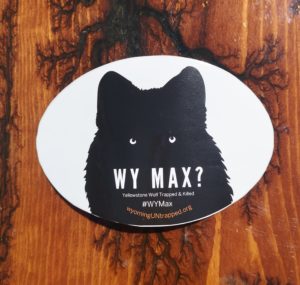
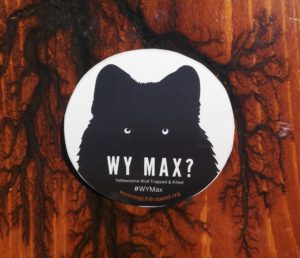
Danielle Edwards
This is awful 😢
Sheryl Schroeder
Horrible! Why do people feel the need to KILL!?
April Christofferson – School of Biological Sciences
[…] started drafting the manuscript before the incident, the wolf, who was named “Max,” became a cause celebre. The issue of wolf hunting in Montana and the American West is classic Christofferson fodder for […]
April Christofferson | College of Science
[…] started drafting the manuscript before the incident, the wolf, who was named “Max,” became a cause celebre. The issue of wolf hunting in Montana and the American West is classic Christofferson fodder for […]